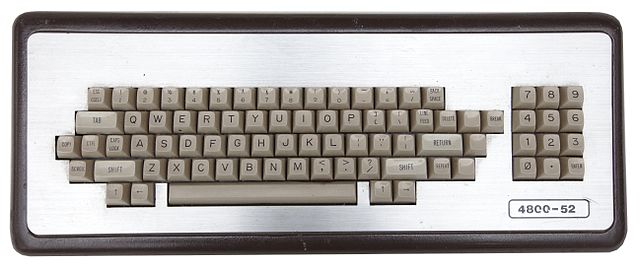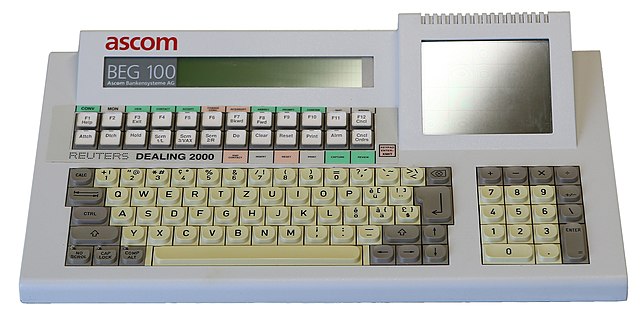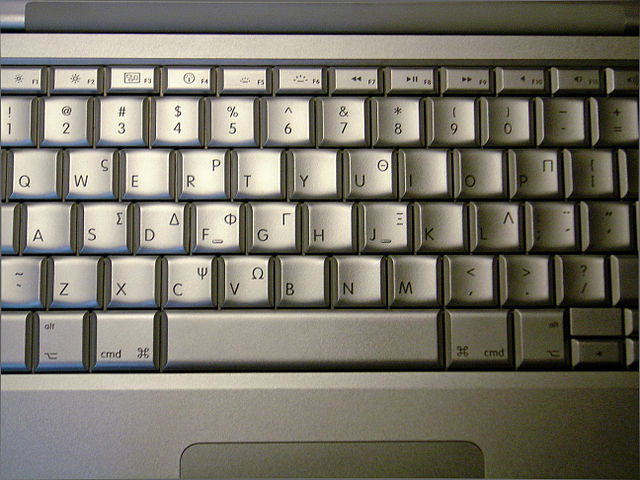A keyboard layout is any specific physical, visual, or functional arrangement of the keys, legends, or key-meaning associations (respectively) of a computer keyboard, mobile phone, or other computer-controlled typographic keyboard.
MIT "space-cadet" keyboard, a pre-ISO/IEC 9995 keyboard with a large number of modifier keys. It was equipped with four keys for bucky bits (Control, Meta, Hyper, and Super); and three shift keys, called "shift", "top", and "front".
4800-52 mainframe / dumb terminal keyboard, c. mid-1980s. There is an obscure configuration of modifier and arrow keys, line feed key, break key, blank keys, and repeat key.
Keyboard of a Letter-Printing Telegraph Set built by Siemens and Halske in Russia c. 1900
A visual layout consisting of both factory-printed symbols and customized stickers
A computer keyboard is a peripheral input device modeled after the typewriter keyboard which uses an arrangement of buttons or keys to act as mechanical levers or electronic switches. Replacing early punched cards and paper tape technology, interaction via teleprinter-style keyboards have been the main input method for computers since the 1970s, supplemented by the computer mouse since the 1980s.
A wired computer keyboard for desktop use manufactured by Lenovo
Keyboards on laptops usually have a shorter travel distance and a reduced set of keys.
Multifunction keyboard with LCD function keys
A Greek keyboard lets the user type in both Greek and the Latin alphabet (MacBook Pro).








